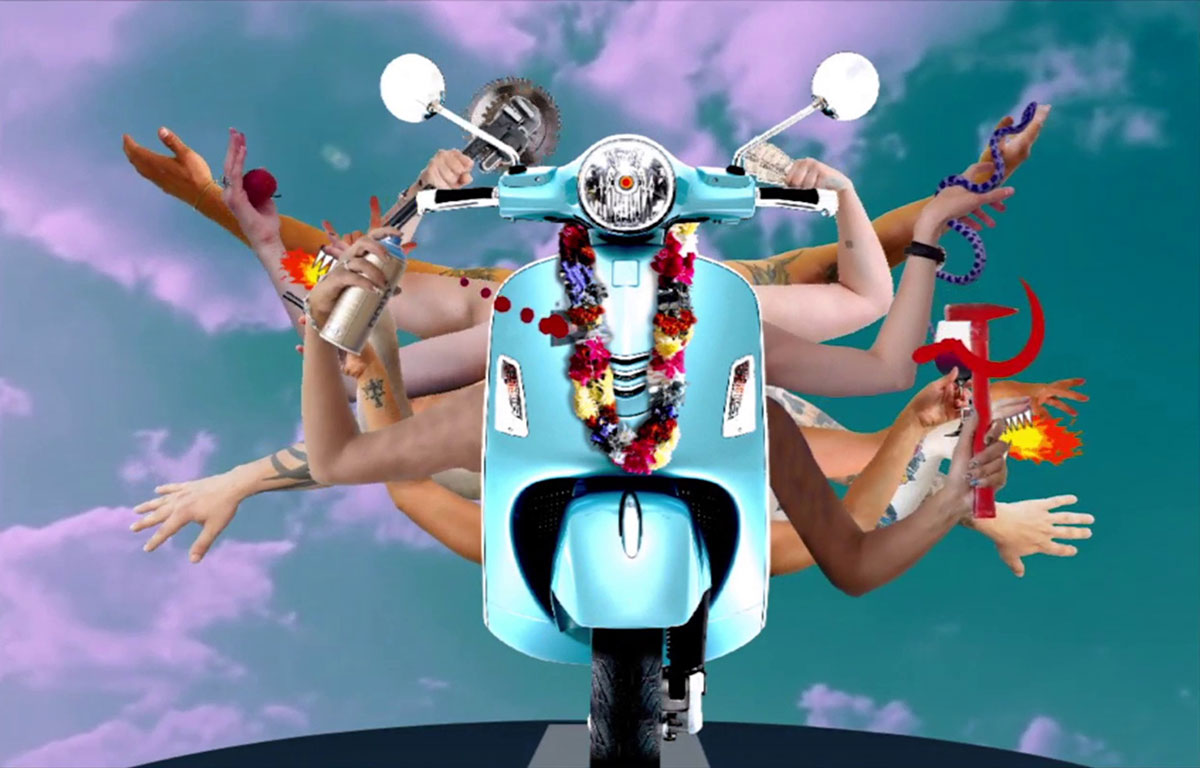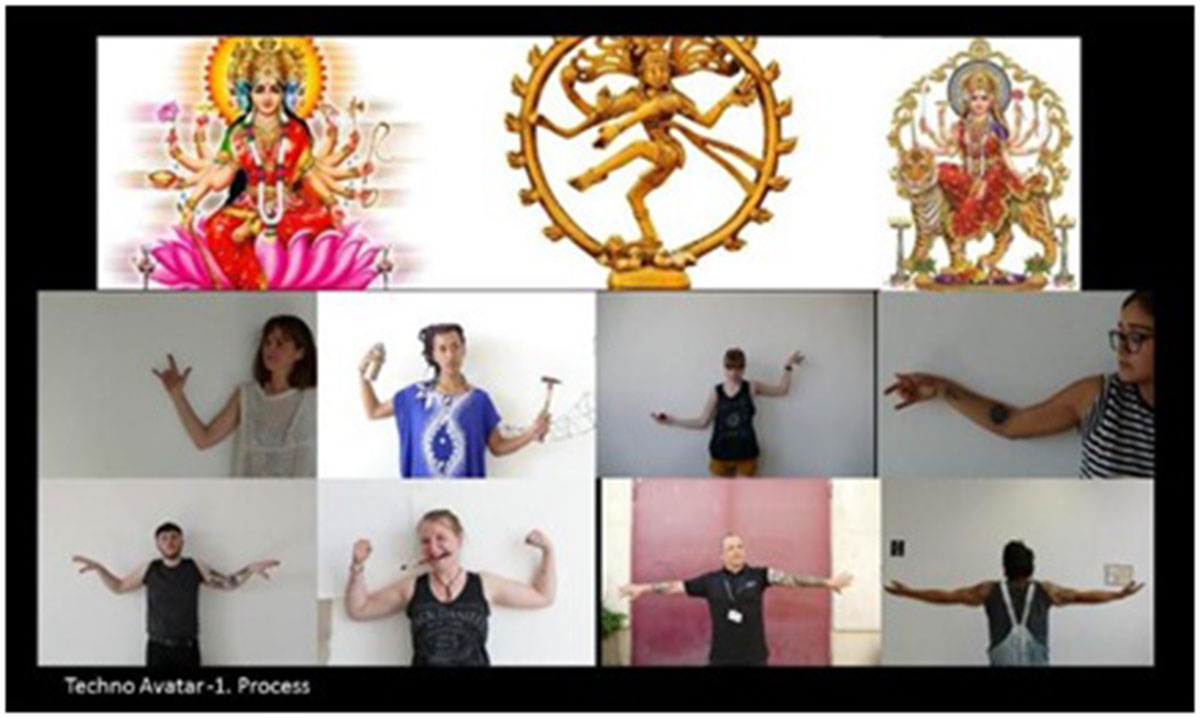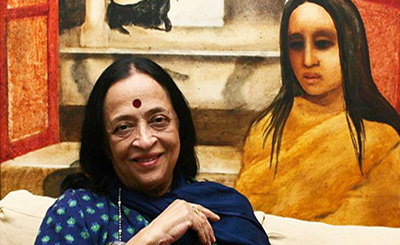
Single Channel Video Projection, 00:60:00 seconds | Silence, 2017. Photos courtesy: Vijayaraghavan Srinivasan
Mired ostensibly in the vortex of commodification, Indian video-artist and multi-media painter Vijayaraghavan Srinivasan’s ‘Techno Avatar’ gives an expression to the mundane, the quotidian and the banal, and lends the dreary a dash of unhistoricised flippancy. Selected for the audience and jury award in the 60 Second International Film Festival organized by the Danish Art Foundation, Copenhagen, Denmark between February 10-16, 2020, Vijay’s central image of LML Vespa creates a discourse of cultural parody where meaning is teased out from cultural associations, signs, symbols, and metaphors. Vijay discloses the work’s historicity: “I found this object at the “Heilig’s Blechle” scooter workshop at Industriebahn Berlin which has strong connection with my nativity and popular image across globe. I integrated with single channel animated video fused with many hand gestures movements — performed by participants of the Berlin Art Institute studio program — with signs and symbols of protagonist in the Indian idols.”
The flashy transformation of the LML Vespa, the legendary scooter brand of the Italian conglomerate, Piaggio, finds its Indian version. Creating a riot of sensory impressions, the cultural truth is filtered through multiple signifiers. The act of restoration, juxtaposing the sublime and the diurnal, is a ritual celebration of use and reuse. More importantly, the representation of ‘Techno Avatar’ in multiple spaces in nine cities in Denmark lends a discerning movement to the relationship between space and audience interaction. The aesthetic space emerges as a participatory space where the commodified in ‘Techno Avatar’ operates outside the corporate control in mapping out the spectrum of viewers’ reception. What and how the viewers participate in the play of art meaning-making is post-modernist where the artist’s intentionality is outstripped by the pluralistic reading of viewers. In this endeavour to forge a stronger emotional engagement with the collective intelligence of the viewers, the monitorial role of Vijay’s artistic activism, where cultural plurality and digital democracy enjoin and expand, speaks with unquestioned authority and prowess.

The maddening cycle of renewal in ‘Techno Avatar’, amplified by its rusty, wrenching sound, revels in the aesthetic fancies of the bourgeois. For an artist, it can be an outrageous dominance of fallacious artificialities to be contested to decode the fetishism of possession. The mobility of art is imbued with the fiery rhetoric of intolerance, political and theological. What is gloriously radical is the multiple hand gestures of the Indian idols, conjuring up the Goddess Durga, countering the anarchy of ideas with anti-secularist postures. The orthodoxy of the Orient is repositioned to cater to this dynamic, artistic language of pluralism. ‘Techno Avatar’ is an artistic legitimacy to reconcile disparate elements in search of what is profoundly humane. Vijay’s art is intriguingly confrontational in reviving the pattern of bourgeois forgetting. In the process, the tangle of forgotten echoes is unravelled. The receding memory of nativity is recalled and interrogated to assert its instrumental and sacred value. Vijay creates an interactional space where viewers are enamoured as they construct mental scripts threatened or discredited by cultural agencies that thrive on the entrenched diktat of devouring consumerism.
‘Techno Avatar’ also poses questions of local cultural specificity by alluding to the religious metaphor of Goddess Durga to compensate for the growing right-wing Hindutva zealots marginalising the ‘perennial’ India and her cultural catholicity. The congruence of religion and technology, out to unleash the bending of authoritarian power, is an act of subversion to reverse the dominant narrative of political hubris where peripheral sub-texts are reduced to non-entities, circumscribed by brutal coercion and muzzled by the lingo of competitive populism in an age of post-truth. The extended metaphor of LML Vespa is not only a comment on unabashed acquisitiveness but also a reminder of the truth of the ‘integrity of planetary biosphere’ (David Suzuki). One cannot ignore the poet-sear Tagore’s prophetic words of caveat against a deeper malaise to stem the tide of consumerist, self-seeking indulgence through the celestial trope in The Robbery of the Soil: ‘Until finally, the moon, like a fruit whose pulp has been completely eaten by the insects which it has sheltered, become a hollow shell… a universal grave for the voracious creatures who insisted upon consuming the world into which they had been born.’

‘Techno Avatar’, internalising the praxis of popular culture, rides on the fuel of the primacy of senses or, to quote the Hindu sukhmasharira (the subtle body) feeding on the five passions, as the psychoanalyst-writer Sudhir Kakar claims — sexual desire, rage, greed, infatuation and egotism. Vijay forges historical associations with visual clichés through the mundane yet uncanny objects of gratifications; gratification, if not all together of irremediable insinuation, finds expression in a montage curating memories — innate, inchoate and internalised. Vijay’s deep sense of nativity reconfigures memories as he instantiates the fissure of personal and historical absences in the wake of tortured experiences. ‘Techno Avatar’ recursively speaks the metonymic narrative where transfer is contingent upon, to borrow the eloquent phrase “horizon of expectation” from German academic Hans Robert Jauss. It also testifies American writer and philosopher Alain LeRoy Locke’s concept of cultural reciprocity in foregrounding German and Indian hybridity. The ethical import of Vijay in ‘Techno Avatar’, as a counter-stereotype in diminishing negative instincts, is a worthy exemplar in today’s prejudice-ridden world. Moreover, it would be pertinent here to contend that the inter-personal nature of ‘Techno Avatar’, drawing on personal experience in Berlin, bears out the positive implications identified in American psychologist Gordon Willard Allport’s contact hypothesis. Art in ‘Techno Avatar’ is transnational in transforming a commercial space through its iconicity.
More from Arts
Comments
*Comments will be moderated











